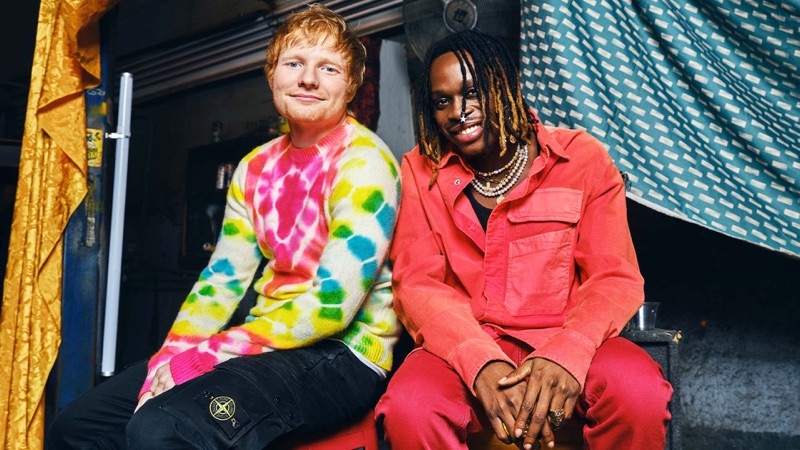Place branding enables communities, cities, countries, and destinations generally to project their unique features to attract investors, visitors, and capital. A well-crafted place branding strategy promotes destinations’ sense of place. It goes beyond attracting visitors, it’s about ensuring that each visitor is happy and satisfied during the visit and would love to do repeat visits. Apparently,
Fireboy DML’ has offered free brand awareness for the Peruvians, consequently, the Peruvian Government has informally acknowledged the unsolicited place branding song which has gone viral by stating that: “PERU PARA, PERU PERU PARA!!! Seems like @edsheeran and @fireboydml were inspired by our country to launch their newest hit?” The tweet is like adding petrol to a fiercely burning fire. Before this comment, in less than 24 hours, after it was released on 24th December, it had recorded 1 million views; after the Peruvian Government’s comment the views rose to over 3million in less than 48 hours and it has remained as #1 on trending music on YouTube since it crossed 1million views.
Fireboy DML, (Adedamola Adefolahan) is signed to Olamide’s YBNL Nation. He was born on 5 February 1996 (age 25 years), Ogun State. As a teenager, Fireboy DML grew as a member of the church choir and later developed an interest in music while studying at Obafemi Awolowo University. Fireboy DML’s remix of Peru, with the Grammy Award-winning English singer EdSheeran (Edward Sheeran), has opened a new chapter in tourism promotion, place marketing, and branding. He has demonstrated that music as a universal language is a viable instrument for tourism promotion, for bringing obscure tourist locations to global attention.
The role of place branding, cannot be tokenized among various strategies being used to attract potential tourists to one’s country. Hosting football tournaments is one of the most popular places branding strategies. For instance, Qatar will be hosting the next World Cup in 2022, which is expected to open up its borders to an influx of investors and visitors. Saudi Arabia and the UAE are the top tourist destinations among the Gulf countries and apparently, Qatar is the third. There are many must-see tourist attractions scattered in various parts of the world with low patronage. A poorly branded tourist destination is like a beautiful lady who stays in the dark, she needs to come under the light in order to be seen and be wooed.
READ ALSO: South Africa’s anti-apartheid icon Desmond Tutu dies at 90
As COVID-19 has negatively affected the tourism sector, countries of the world would rely more on innovative place branding strategies to resuscitate global tourism. Tourism is part of human life, besides it is a source of livelihood for millions of people globally. As the UN Secretary-General, Mr. António Guterres, notes: “Tourism is one of the world’s most important economic sectors. It employs one in every ten people on Earth and provides livelihoods to hundreds of millions more.” As countries in the global north roll back blanket restrictions on travel, as witnessed in recent days, with the emergence of the Omicron Covid-19 variant; and countries of the global south have more equitable access to vaccines and access to patents for local production of vaccines, we would be able to reset nosedived global tourism to its default mode.
Let’s hope that the South American country would reward Fireboy DML by appointing him as a Peruvian tourism ambassador, just as WEMA Bank instantly made Davido it’s brand ambassador after he has raised over #200 million using an account with them. In concluding this piece here are 5 facts about Peru.
In 1824 Peru became the last colony in South America to gain independence from Spain. The current population of Peru is 33 million, based on Worldometer elaboration of the latest United Nations data. The country’s vast mineral, agricultural, and marine resources have long served as the economic foundation of the country, and, by the late 20th century, tourism had also become a major element of Peru’s economic development.
2. Peru shares boundaries with Colombia to the northeast and Brazil to the east and shares borders with Bolivia to the southeast, Chile to the south, and Ecuador to the northwest.
3. The name Peru is derived from a Quechua word implying land of abundance, a reference to the economic wealth produced by the rich and highly organized Inca civilization that ruled the region for centuries.
4. The Capital of Peru is LIMA, a coastal city, (not PARA). It is the country’s commercial and industrial center.
5. Peru is the world’s largest producer of cocaine. Consequently, Peru is under pressure to stop people from growing coca – the plant from which cocaine is produced.

